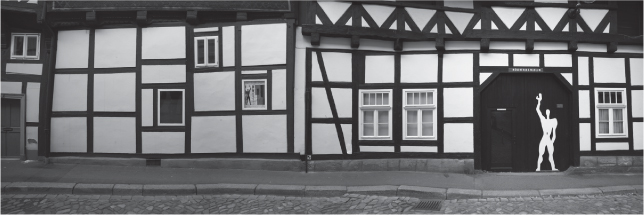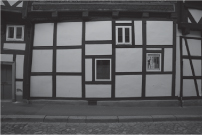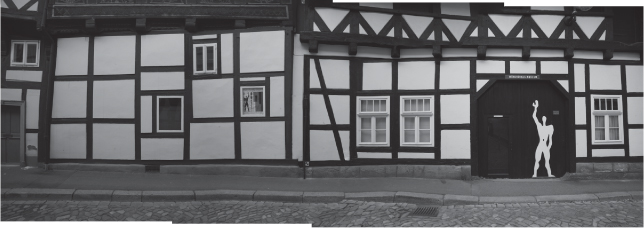34 Creating Panoramas Using Photomerge
The automated merging of several photos to create a panoramic image still left a lot to be desired in Photoshop CS2 and earlier versions of the program. Fortunately, the tool has been greatly improved since the release of the CS3 version.
Let’s compare three photos taken with a focal length of 280 mm from the same location with a tripod. I shot them so the photos would slightly overlap and the buildings would be roughly the same height. The exposures were also identical, and yet the photos have slightly different gray tones. This tonal difference is precisely the type of situation that earlier versions of Photomerge couldn’t adequately master (figure 34–1). The seams between the individual source images are clearly visible and the architectural lines in the image are not cleanly joined. The Auto function in Photoshop’s Photomerge calculates these same images much better (figure 34–2). The tonal values have been adapted to each other and the architectural lines have been stitched together almost perfectly. By cropping and slightly increasing the contrast in this photo, a quite acceptable panoramic photo (figure 34–3) that did not even need a shift lens, is obtained.
Photoshop is also capable of stitching together images taken without shift lenses that earlier versions of Photomerge refused to tackle. The Mönchehaus Museum of Modern Art in Goslar, Germany, has been photographed here three times (figures 34–4 to 34–6) with the same 17 mm lens from three different locations. In each case, the camera was placed on the tripod at the same distance from the building’s façade and was positioned exactly parallel to it. It was also essential for the photos to overlap.


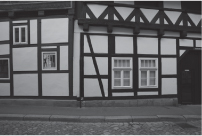
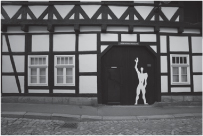

First, the photos were stitched together using the Auto function in Photomerge, and the program did a clean job of merging the fine transitions together (see, for example, the curb or the half-timbered architecture in figure 34–7). However, the new perspective reduces image size in the edges, but Photomerge can also adjust for this, so the three photos are woven together parallel to each other and without noticeable changes in perspective. In these images, it works best with the Cylindrical function if the field Reposition Only is checked. A surprisingly clean and good-looking photo is the final result (figure 34–8).
In the image of this narrow street filled with medieval half-timbered houses, the combination of cropping and a slight increase in contrast presents a panoramic photo whose 8,458 × 2,995 pixels (i. e., more than 25 million pixels) would permit a considerable enlargement (figure 34–9). End result: Panoramic photography really benefited from this new release of Photoshop.
